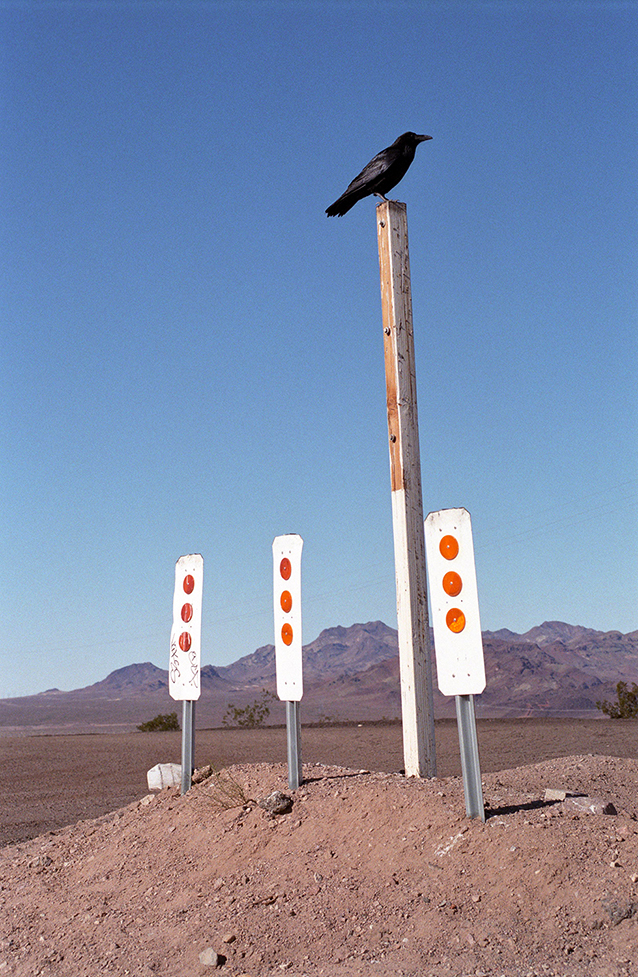Images by: Dillon Marsh-Evander Goldfield
Written by: Ryan Nemeth
I recently read an article by an International publisher that proclaimed, “The Golden Age of photo books is dead.” For me, nothing could be further from the truth. The article’s title should have been, “Traditional publishers are not adapting to changes in photo book markets.” It would be tough to make an argument for the “ Golden Age” of photo books without first acknowledging the elephant in the room. BREAKING NEWS: Elephant speaks and says, e-commerce and the Internet have been highly disruptive to the publishing industry. Sorry, not too much shock value here, but I tried! However, here is my assessment of the situation.
Computers have bestowed the power of printing and publishing to the masses and therein lies a huge problem; unnatural competition to publishers from photographers willing and able to self-publish. As a result, traditional publishers openly acknowledge that their supply chains and distribution networks do not function as they did a decade ago. So logically, you are probably wondering, why? The popular assessment is that the Internet has bestowed us with a direct to consumer business model. Thus, irrelevant of one’s industry, the ability to sell direct to consumers squeezes middlemen out of the mix. So when publishers complain that their markets are off, or that this is not the “Golden Age” of photo books, are they just acknowledging that current market forces are cutting them out of business deals? For me, this would be a more accurate assessment of the current state of the photo book market. I happen to think that it is a tremendous time to self-publish photo books and that we are indeed moving through a renaissance in photo book publishing, here is why!
To date, the traditional photo book publishing market has mainly been predicated on scale and volume as a model for profitability. For producers, the volume proposition is simply the more you print, the cheaper the books get. For example, a run of 10,000 books yields production costs that are much lower than runs of say 1,000 or 500 books. Most importantly, printing in volume and selling these large batches of books ensured that there was enough money for the photographer, publisher, distributor, and the resale person in the supply chain. When you hear about an industry standard rate of 3 to 5 times mark up, this is exactly where it comes from. Thus, publishers or those outlaying the cash for publishing deals are looking to cover the markup of the book and subsequent cost adding steps through each phase of the supply and distribution chain. Obviously, covering costs is a necessary component of turning a profit. As we know, profitability equals continued investment in new photo book projects.
Let’s explore this concept in more detail, say a publisher could hypothetically produce 10,000 case bound photo books for $10 a book. In order to cover $20,000 of photographer royalties, the publisher has to mark each book up $2 dollars. To cover marketing, promotion, and advertising costs, they must add another $3 dollars per unit for production overhead. Thus, out of the gate, a $10 dollar book increases to $15 per unit breakeven. At volume, the distributor would typically expect 30-50 percent returns. Thus, the book’s breakeven price would become $22.50. Add in a 100 percent return to the publisher and 50-100 percent margins for the bookseller and you are looking at a photo book that costs $50-60 retail. This traditional model and various iterations of it worked for a long time. However, the reason I point out all of this boring business detail is because this scenario demonstrates that the ability to publish commercially was and has been largely predicated on scale. Thus, the story was that if you could not produce books and distribute them in volume, you would have a tremendously difficult time selling books profitably to the larger book market!
Let me remind you that we are not too far beyond a time when purchasing a book in a retail environment was essentially the only access point to that book. Thus, photographers needed access to bookstores to sell their books. The only way to go to market without incurring tremendous amounts of distribution expense was in fact to work through publishers. Because of this distribution burden and the relevant market access issue, a majority of photographers would turn to publishers to take on their financial risks and to assume their production overhead. I should point out that under this model, not too many photographers, if any, had the necessary cash on hand to produce and self-publish large enough runs of books that were affordable to the mass markets through retail outlets. Photographers were therefore dependent on publishers and their supply and distribution networks as the primary means for access to the broader book market. In many ways, this model helped keep the photo book market contained and predictable. Thus, publishers and their established distribution networks essentially gated access to the larger book market. The end result is that publishers could capture and retain steady amounts of market share. This system worked for many decades and it translated into solid returns on book projects for many publishers and their renewed investment in book projects.
Enter the computer. Little did we know while drinking Tab Clear and playing Myst on our Macintosh Color Classic in 1993 that it would all end up like this. However, let there be no doubt that the evolution of our beloved machines and the capacity to network has changed the scale proposition for photo book producers the world over. In doing so, artists and photographers now have direct access to consumer and collector markets via the Internet. Furthermore, it should also be noted that advances in digital printing are stimulating industry change. Thus, reductions in press set-up time and efficiency gains generated through digital printing processes have been passed on as costs savings to producers and consumers. This factor has had a tremendous effect on opening up the book market to self-publishing efforts.
The real game changer that is looming over the entire industry and starting to come online is the capacity to print on demand (POD). As you are probably aware, this technology changes the entire scale factor of book production. Thus, books are produced as they are ordered, and as you may have guessed, you only outlay cash and produce books when consumers buy them! For me, this is a powerful tool in book project risk mitigation. Obviously, there is no longer a need to sit on thousands of books of inventory. Going back to the article I read; the two book publishers interviewed spoke about the financial risks associated with their current projects. One publisher mentioned book volumes of 4,000 units and the tremendous financial outlay required to produce these books. I say this perspective and the ensuing argument is hardly relevant in an age when you can print high-quality photo books on demand? However, this argument is predicated on the industry shifting their business model from an old paradigm as described above, to one that has adopted current production and sales methodologies. For those publishers still trying to operate under their old large volume production and distribution models, I wish you luck!
THE GOOD NEWS.
You must be thinking that print on demand (POD) technology sounds like something of the future that is not accessible to both you and I. However, let me assure you that access to POD printing has been granted to all. I have personally located several commercial printers that currently offer POD technology for both perfect bound and case bound photo books; both formats are totally customizable. This means silkscreened covers, choices of linen wraps, color options, foil stamping, custom binding, selections in paper, and choices in printing methods. Furthermore, the better printers offer shopping cart and inventory management integration with their services. Thus, photographer’s websites like yours and mine can link directly to a production facility’s order management system. For example, this means that when someone orders a book on my site, the manufacturer automatically produces and fulfills the order from the transaction on my site. So what happens to the traditional publisher when lots of photographers go about self-publishing and selling their books via this method online? Yep, you guessed it, they lose market share and face becoming obsolete! From a traditional publisher’s perspective, this drastic change in the way of doing business satisfactorily explains why market share has become “fractured”. Thus, the “fractured” book market as described in the article, exists because publishers are increasingly losing market share to self-publishers and small independent operations that can turn profits at a very small scale. Essentially, you and I have become the industry’s competitor!
In no way am I advocating for a scenario where publishers face financial ruin or the inability to gain traction in a transformed market. Quite the contrary, I should point out that there are many amazing publishing houses in the market and their expertise, knowledge, and continued approach to book making brings a lot to the table. However, what I do advocate for in the photo book market and beyond is market access. Furthermore, I believe that marketplace competition through expanded access breeds both innovation and increased quality in photo book offerings. It is evident that publishers are now operating in a heightened competitive environment. This competitive factor induces market pressure to increase the quality of books being offered, while simultaneously placing downward pressure on production costs. To this I say, may the best books win in this new era of production and consumption!
At a bare minimum it would be impossible not to conclude that established publishers face declining market shares. You really do not have to look too far! The shear volume of websites and the amount of Internet activity surrounding indie publishing efforts is staggering. On a regular basis, I find small publishers that are cranking out really interesting books. Thus, evidence supports the idea that technology is enabling new market growth that is increasingly being captured by independent self-publishers. Additionally, when I look at photo books, I am seeing the use of innovative book materials and non-standard book formats. Furthermore, I frequently stumble across inspired and collaborative discussions about photo books in online communities and groups. Some online groups of photographers go as far as sharing information about best practices and production methods used in creating their books. Most importantly, I see communities of photographers that are dedicated to pushing boundaries and participating in an industry on their terms. From a photographer’s standpoint, this industry feels both engaging and inspired. This is not what you would expect from a dying photo book market? Quite the contrary!
It is one thing to consider and cite changing business models and technology as the culprit for massive shifts in the photo book industry. However, I believe that if this assessment is in fact true, one should also see lots of market evidence to back this assertion up. Thus, when I objectively scan the market, I do in fact see tons of evidence acknowledging sustained and increased market growth. More specifically, I am seeing many small publishers coming online that are now able to support their overhead and gain broader exposure for their projects. In many cases, these are artist and photographer driven publishing businesses. Thus, the creation of market access through technology is enabling contemporary indie publishers to enter a market that did not exist a decade ago. However, I must admit, the current reality of most small scale publishing endeavors is that these book projects are low margin and low return projects. Thus, the scale factor necessary for profitability never entirely goes away. Whereas the breakeven point for a book project a couple decades ago may have been 2,000 books, it could now hypothetically be something like 100 books or less; this is impressive! I say that these micro runs of books are in fact creating broader market exposure and career opportunities for many gifted photographers that may have continued their existence as unknown photographers a mere decade ago.
I feel totally empowered by the state of the current photo book market as an independent photographer interested in self-publishing and selling books online. If a photographer’s aim is expanded market exposure through self-publishing efforts and online sales, I say the world is your oyster. There should be no doubt that the “Golden Age” of photo books is here. Our capacity for small-scale production and direct to consumer distribution is unprecedented. To this I say, get after it!

























